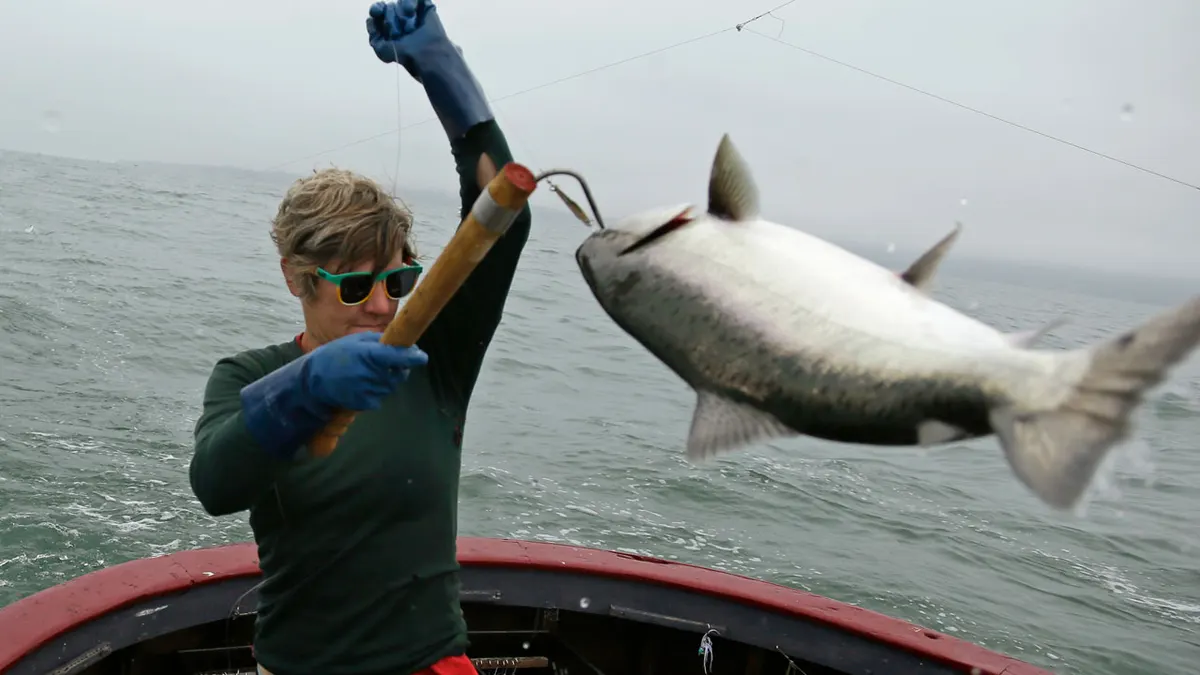Amidst the struggles of salmon populations along the California coast, fishery officials have opted for a second consecutive year of fishing bans. The Pacific Fishery Management Council, responsible for determining ocean fishing seasons across multiple states, unanimously recommended the shutdown of both commercial and recreational fishing along the coast. This decision stems from significant declines in Chinook salmon populations in recent years, with the aim to aid in their recovery.
Scott Artis, executive director of the Golden State Salmon Association, expressed concern over the devastating impact of another year of closure, noting the hardships experienced by many in the fishing industry. With approximately 460 vessels in California’s commercial salmon fishing fleet, individuals have been forced to seek alternative sources of income. Charter boat operators catering to recreational fishing will also need to find other avenues for business during this period.
This marks only the second time in California’s history that coastal fishing has been prohibited for two consecutive years, with the previous occurrence in 2008 and 2009. Both instances followed severe drought conditions, illustrating the interconnectedness of environmental factors with salmon populations.

California Coast Salmon Fishing Shut Down for Second Year Due to Population Decline (Credits: KESQ)
The decision to prolong the fishing ban reflects the lingering effects of past environmental challenges. Charlton “Chuck” Bonham, director of the California Department of Fish and Wildlife, highlighted that despite recent rainy seasons, the salmon population’s recovery is not expected until around 2026 or 2027. The impact on salmon stocks is attributed to environmental conditions from three to five years ago.
The Department of Fish and Wildlife underscored ongoing issues associated with drought and climate disruption, emphasizing the continued impact on salmon stocks in California. Low numbers of returning adult salmon and bleak ocean population forecasts prompted the Pacific Fishery Management Council’s recommendation for a full closure of ocean salmon fisheries.
Notably, blame for the low salmon numbers has been directed at California water managers, with accusations of excessive water diversion to farms and cities. Artis criticized Governor Gavin Newsom’s administration, citing unsustainable water practices and the expansion of water-intensive agriculture, particularly almond farming.
In response to the crisis, state officials are prioritizing efforts to aid salmon population recovery. Initiatives include habitat restoration, modernizing hatcheries, and removing barriers to fish migration. Despite the challenges, Bonham remains optimistic, emphasizing the potential for salmon to thrive with targeted interventions.
The closure’s impact extends beyond economic ramifications, affecting the cultural significance of salmon to Native tribes. While federal disaster relief funds have been allocated for affected fishing communities, delays in distribution have prolonged the industry’s recovery. Newsom’s administration continues to seek federal assistance, recognizing the urgency of addressing the ongoing crisis facing California’s salmon population.























